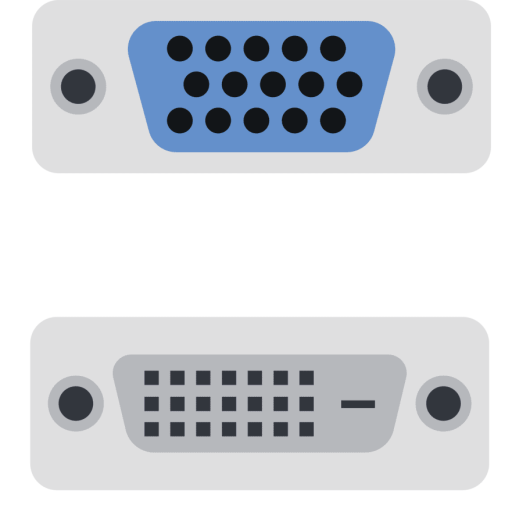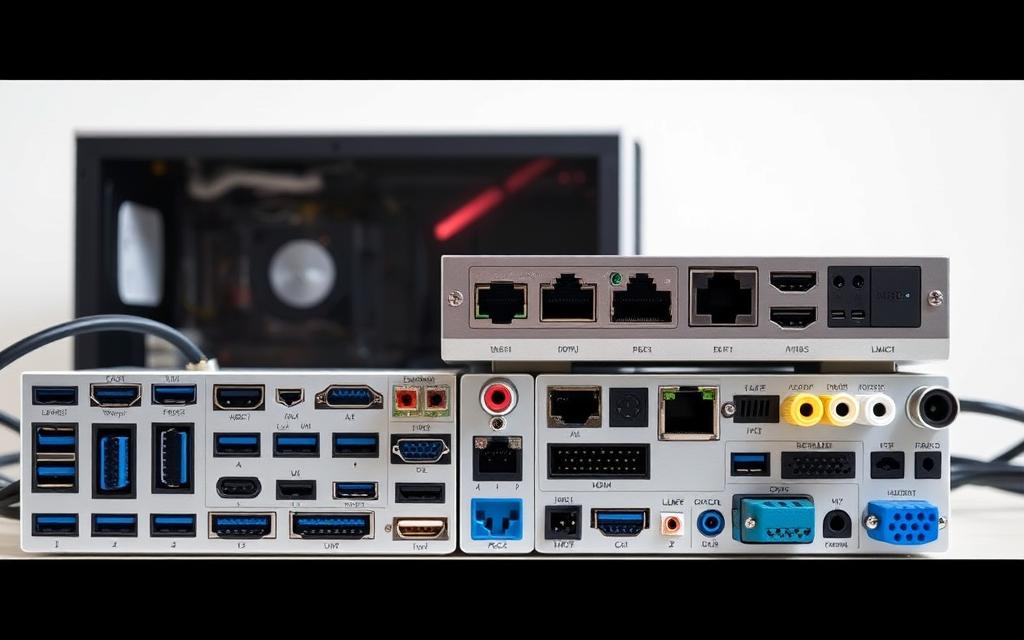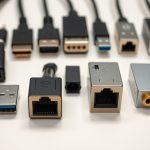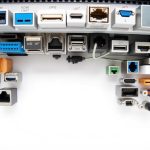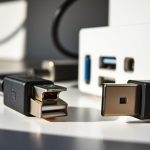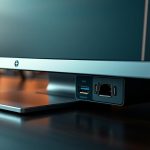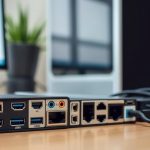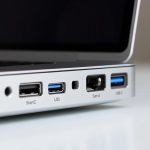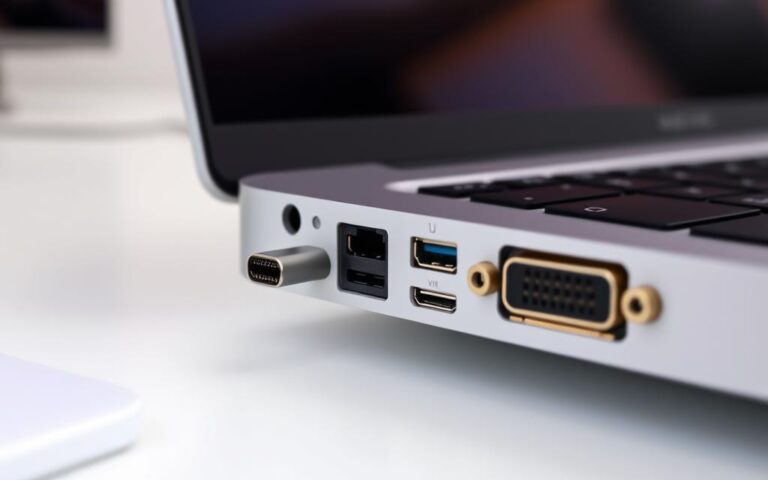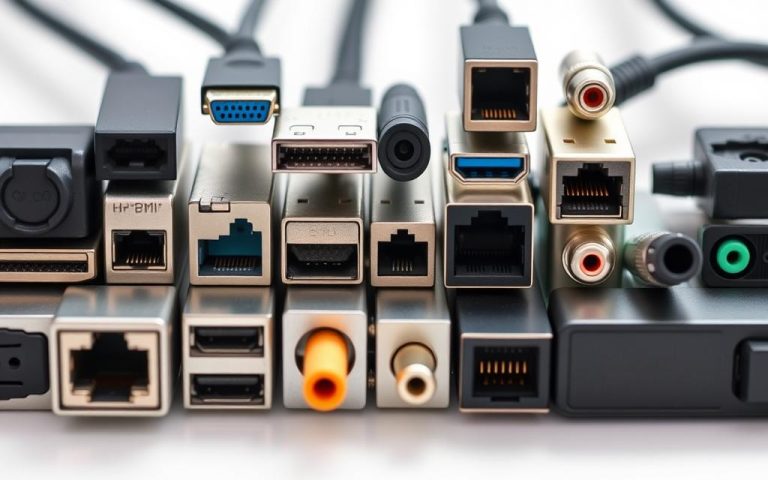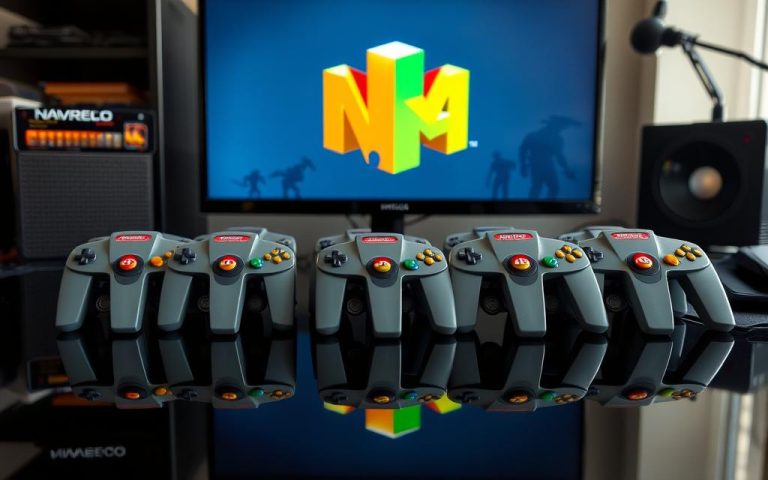Ports on a PC: A Complete Beginner-Friendly Guide
Understanding the various ports on your computer is essential for connecting external devices and expanding its functionality.
Modern computers come equipped with a variety of ports, each designed for specific tasks, such as transferring data or providing power to peripherals.
In this guide, we will explore the different types of ports found on a typical PC, explaining their functions and importance in a way that’s easy to understand.
By the end of this article, you’ll be able to identify and use various port types, ensuring you’re well-equipped to connect your devices and make the most of your computer.
What Are Computer Ports and Why Do They Matter?
Computer ports are the backbone of modern computing, enabling users to connect various devices to their PCs. In essence, a computer port is a physical docking point on a computer that allows users to connect external devices or peripherals, thereby expanding the computer’s functionality.
Definition and Basic Functions
A computer port acts as an interface between the computer and external devices such as a mouse, printer, or modem. These ports are categorised based on their location and function, primarily into internal and external ports.
Internal vs External Ports
Internal ports connect the motherboard to internal devices like hard disk drives and CD drives. On the other hand, external ports connect the motherboard to external devices such as modems, printers, and flash drives. The distinction between these two types of ports is crucial for understanding how data is exchanged between the computer and various peripherals.
- Computer ports facilitate data exchange between the PC and peripheral devices, serving as gateways for information flow.
- Ports provide standardised connections for both internal and external devices on the computer’s motherboard.
- Understanding the difference between internal and external ports is vital for setting up and troubleshooting computer systems.
The role of ports in determining a computer’s expandability and compatibility with various devices cannot be overstated. As technology advances, the types and capabilities of ports continue to evolve, influencing the overall computing experience.
Common Types of Ports on a PC
Understanding the different types of ports on a PC is essential for effective connectivity. Computer ports are the physical docking points that facilitate users to connect required external devices to the computer or computer network.
Physical Characteristics of Different Ports
The various types of computer ports can be distinguished by their physical characteristics, including their shapes, sizes, and colours. For instance, USB ports are typically rectangular, while audio jacks are usually circular.
How to Identify Ports on Your Computer
To identify the ports on your computer, look for labels or symbols near each port. Most modern PCs have standardised colour-coding and icons to help users recognise the purpose of each port.
| Port Type | Description | Common Use |
|---|---|---|
| USB Type-A | Rectangular connector | Connecting peripherals like mice and keyboards |
| HDMI | Trapezoidal connector | Connecting to monitors or TVs for video output |
| Ethernet (RJ-45) | Square connector with clip | Wired internet connection |
By familiarising yourself with the types of ports and their uses, you can easily connect your devices and expand your PC’s capabilities.
USB Ports: The Universal Connection
In the world of computer peripherals, USB ports stand out as a versatile and ubiquitous connection solution. USB, or Universal Serial Bus, has become the industry standard for short-distance digital data connection, making it easy to connect a variety of devices to computers.
There are several types of USB ports, each designed for specific uses. USB Type-A is the classic standard, commonly used for connecting devices such as flash drives, keyboards, and mice. On the other hand, USB Type-B is often used for printers and other larger peripherals, while Mini and Micro USB variants are typically found on portable devices like cameras and smartphones.
USB Type-A: The Classic Standard
USB Type-A connectors are flat and rectangular, making them easily recognizable. They are widely used for connecting peripherals such as external hard drives, printers, and input devices.
USB Type-B and Mini/Micro USB
USB Type-B ports are square-shaped and often used for larger devices like printers. Mini and Micro USB connectors are smaller and used for portable devices, offering a compact solution for data transfer and charging.
USB Type-C: The New Generation
USB Type-C is the latest generation of USB ports, offering a reversible design that makes it easier to connect devices. It supports faster data transfer speeds and higher power delivery, making it a versatile and future-proof connection standard.
Understanding USB Speeds
USB ports come with different data transfer speeds, including USB2.0, USB3.0, and USB3.1. USB2.0 offers speeds up to 480 Mbps, while USB3.0 significantly boosts this to 5 Gbps. The newer USB3.1 standard can achieve speeds of up to 10 Gbps, making it ideal for transferring large files quickly.
- USB2.0: Up to 480 Mbps
- USB3.0: Up to 5 Gbps
- USB3.1: Up to 10 Gbps
Understanding the different types and speeds of USB ports can help you choose the right peripherals for your needs and ensure you’re getting the best performance from your devices.
Video and Display Ports
To enjoy high-quality visuals on external devices, it’s essential to familiarise yourself with the different video and display ports on your PC. These ports enable you to connect your computer to monitors, projectors, and televisions, enhancing your viewing experience.
HDMI: The Ubiquitous Choice
HDMI (High-Definition Multimedia Interface) is the most common display connection used today. It can power up to a 4K resolution monitor and transfer audio signals, making it a convenient single-cable solution for both video and sound.
DisplayPort: For Professional Needs
DisplayPort is considered a top-tier display connection, offering higher bandwidth than HDMI. It’s particularly useful in professional environments where multiple monitors are daisy-chained or higher refresh rates are required.
Legacy Display Connections: VGA and DVI
While VGA (Video Graphics Array) and DVI (Digital Visual Interface) are older technologies, they may still be found on some equipment. Understanding these legacy connections is crucial, especially when using older monitors or projectors.
| Port Type | Max Resolution | Audio Support |
|---|---|---|
| HDMI | 4K | Yes |
| DisplayPort | 4K or Multiple HD | Yes |
| VGA | Lower than HD | No |
| DVI | HD | No |
When choosing a display port, consider the capabilities of your monitor and the type of content you’ll be displaying. For most users, HDMI will suffice, but professionals may benefit from DisplayPort’s advanced features.
Audio Ports and Connections
Understanding the different types of audio ports on your PC can enhance your audio experience. Modern computers offer various audio connections that facilitate sound input and output for different devices.
3.5mm Audio Jack: The Headphone Connection
The 3.5mm audio jack, commonly known as the headphone jack, is a ubiquitous feature on many computers and devices. This small, circular port has been around for decades, originating from technology used by telephone operators in the 1870s. It remains widely used for connecting wired headphones and speakers.
Digital Audio Ports
For higher quality sound transmission, many computers and home theatre systems utilise digital audio ports. These include optical audio (TOSLINK) and coaxial digital audio outputs, which provide superior sound quality. As technology advances, many modern computers are relying on USB and Thunderbolt connections for audio, often removing dedicated audio jacks in favour of digital, multi-purpose interfaces.
Network and Internet Connectivity Ports
For a computer to access the internet and connect to networks, it relies on specialised ports designed for these purposes. These ports enable both wired and wireless connections, catering to different needs and environments.
RJ-45 Ethernet Port
The RJ-45 Ethernet port is a staple for establishing wired network connections. It allows computers to connect directly to routers, switches, and modems, providing a stable and often faster connection compared to wireless options. The Ethernet port is particularly useful in scenarios where Wi-Fi is unreliable or when high-bandwidth activities like gaming or video conferencing are involved.
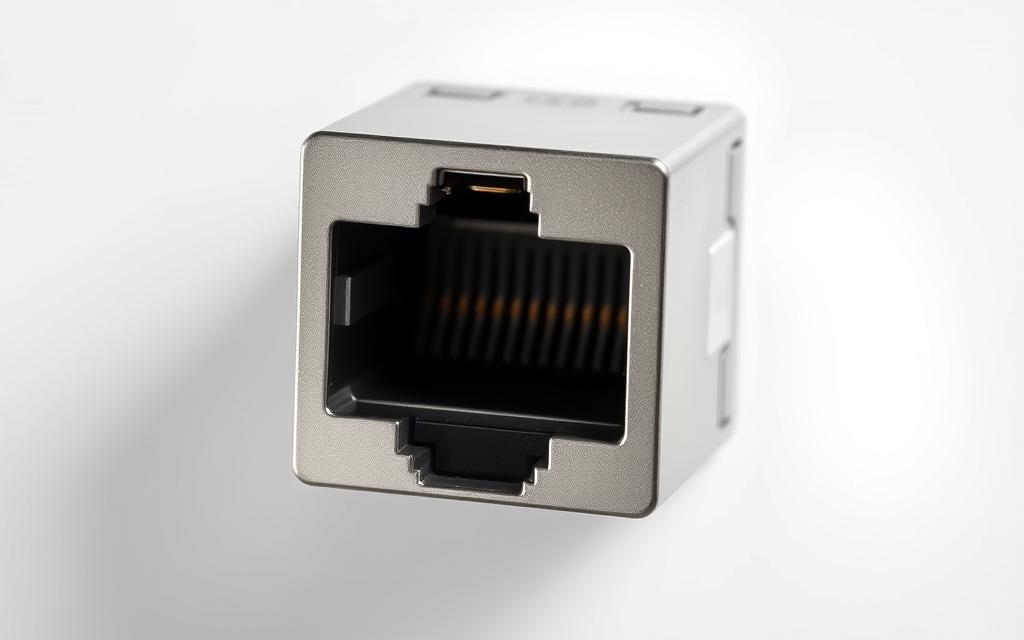
Wireless Connectivity Options
In addition to wired connections, modern computers often come equipped with wireless connectivity options such as Wi-Fi adapters and Bluetooth capabilities. These allow for greater flexibility and mobility, enabling users to connect to networks and devices without being tethered by cables.
- Reliability: Wired connections are generally more stable than wireless ones.
- Security: Wired connections are considered more secure as they are less susceptible to hacking.
- Performance: Ethernet connections typically offer higher speeds and lower latency, ideal for demanding tasks.
Understanding the different network and internet connectivity ports, along with their respective advantages, is crucial for making informed decisions about how to connect your computer to the digital world.
Storage and Memory Card Ports
The inclusion of storage and memory card ports on PCs has become a standard feature, offering users flexibility and convenience. These ports enable users to expand their storage capacity, transfer files from cameras and smartphones, and utilize external storage devices.
SD Card and MicroSD Card Readers
Many modern computers, both desktops and laptops, come equipped with SD card and microSD card readers. These slots allow users to insert memory cards from digital cameras, smartphones, and other portable devices, making it easy to transfer photos, videos, and files. For instance, if you have a DSLR camera, you can directly transfer images to your PC using the built-in card reader, eliminating the need for cables or intermediate devices.
External Storage Connection Options
In addition to built-in card readers, PCs often feature various ports that can be used to connect external storage devices. USB ports, in particular, are widely used for this purpose, supporting external hard drives, solid-state drives, and other storage peripherals. The table below summarizes some common external storage options and their characteristics.
| Storage Device | Interface | Speed | Capacity |
|---|---|---|---|
| External Hard Drive | USB 3.0 | Up to 5 Gbps | Up to 16 TB |
| Solid-State Drive | USB-C/Thunderbolt 3 | Up to 40 Gbps | Up to 8 TB |
| Portable SSD | USB 3.2 | Up to 20 Gbps | Up to 4 TB |
By understanding the different types of storage and memory card ports available, users can make informed decisions about expanding their storage capacity and transferring data between devices. Whether you’re looking to upgrade your laptop’s storage or create a backup solution, the right storage ports can make all the difference.
Thunderbolt and Advanced Connectivity
The world of computer ports is rapidly evolving, with Thunderbolt 3 leading the charge in advanced connectivity. Thunderbolt 3 has revolutionised the way we connect devices to our computers, offering unprecedented speeds of up to 40 Gbps.
Capabilities of Thunderbolt 3
Thunderbolt 3 is eight times faster than USB 3.0 and can transfer an entire 4K resolution film in less than 30 seconds. It can power two 4K monitors simultaneously and connect to auxiliary graphics cards, making it ideal for high-end gaming on ultraslim laptops.
| Feature | Thunderbolt 3 | USB 3.0 |
|---|---|---|
| Data Transfer Speed | Up to 40 Gbps | Up to 5 Gbps |
| Video Bandwidth | Four times more than HDMI | Limited |
| Multi-Display Support | Yes, up to two 4K monitors | No |
AI-Ready and Copilot+ PC Ports
The latest developments in port technology are geared towards supporting AI-ready computers and Microsoft’s Copilot+ PCs. These advanced systems require specific hardware capabilities to leverage artificial intelligence features fully. Thunderbolt 3 ports play a crucial role in enabling the high-speed connections necessary for these advanced computing applications.
Power and Charging Ports
Power and charging ports play a vital role in the functionality and usability of modern computers. These ports are essential for supplying power to devices, enabling them to operate and charge their batteries.
Power Connectors for Desktops
Desktop computers typically use a standard IEC power inlet, known as C14, on their power supplies. This connector allows for the connection of a power cord, which supplies electricity from a wall outlet. Internal power connections within the desktop distribute electricity to various components.
Laptop Charging Ports
Laptop charging ports have evolved significantly, from proprietary barrel connectors to modern USB-C power delivery. USB-C combines data transfer and power supply in a single versatile port, enhancing convenience and reducing clutter. Understanding power delivery specifications, including voltage, amperage, and wattage, is crucial for identifying compatible power adapters for specific laptop models.
Modern power delivery technologies like USB Power Delivery (USB-PD) offer flexible charging options and are contributing to the standardisation of power connections across different device manufacturers.
Troubleshooting Port Issues and Using Adapters
Troubleshooting port issues is crucial for maintaining seamless connectivity between your computer and various external devices. When ports malfunction, it can lead to frustration and decreased productivity.
Common Port Problems
Several issues can affect computer ports, including physical damage, driver problems, loose connections, and compatibility conflicts. For instance, a damaged USB port may not recognize a device, while a driver issue might prevent a device from functioning correctly.
- Physical damage to ports or cables can cause connectivity issues.
- Driver problems can lead to malfunctioning devices.
- Loose connections can disrupt data transfer.
When and How to Use Adapters and Docking Stations
Adapters and docking stations are invaluable tools for expanding a computer’s connectivity options. An adapter can convert one port type to another, allowing devices with different connectors to be used. Docking stations, also known as port replicators, can significantly enhance a laptop’s connectivity by providing additional ports.
Best practices for port management include proper insertion and removal techniques, keeping ports clean, and protecting them from physical damage. By following these guidelines, users can minimize port-related issues and ensure reliable connectivity for their external devices.
Conclusion: Making the Most of Your PC Ports
As we conclude this comprehensive guide, it’s clear that understanding computer ports is crucial for maximising your PC’s potential. The various ports on a PC allow for the connection of numerous devices, facilitating data transfer and enhancing overall computing experience.
When purchasing a new computer, assessing your port needs is essential. Consider the types of devices you will be connecting and ensure the PC has the necessary ports. Future trends in port technology include the adoption of universal standards and increased data transfer speeds.
To maximise the utility of your existing ports, consider using hubs and adapters. These can help expand the number of available connections, allowing you to connect more devices. By understanding the capabilities and limitations of your PC’s computer ports, you can build a more efficient and flexible computing setup.
In conclusion, ports on a PC play a vital role in modern computing. By staying informed about the latest developments and making the most of your available ports, you can ensure your PC remains adaptable to changing technology needs.
FAQ
What is the purpose of USB ports?
USB ports are used to connect external devices such as flash drives, keyboards, and printers to a computer, enabling data transfer and device communication.
How do I identify the different types of ports on my computer?
You can identify ports by their physical characteristics, such as shape, size, and colour. For example, USB Type-A ports are rectangular, while USB Type-C ports are oval-shaped and reversible.
What is the difference between HDMI and DisplayPort?
HDMI and DisplayPort are both used for video output, but they have different capabilities. HDMI is commonly used for consumer electronics, while DisplayPort is often used for professional applications, such as graphics design and video editing, due to its higher bandwidth.
Can I use an adapter to connect a device to a different type of port?
Yes, adapters can be used to connect devices to different types of ports. For example, a USB-C to USB-A adapter can be used to connect a USB-A device to a USB-C port.
How do I troubleshoot issues with my computer’s ports?
To troubleshoot port issues, try restarting your computer, checking for loose connections, and ensuring that the device is properly connected to the correct port. You can also try using a different cable or adapter to rule out any issues with the connection.
What is the benefit of using a Thunderbolt 3 port?
Thunderbolt 3 ports offer high-speed data transfer, with speeds of up to 40 Gbps, making them ideal for applications that require high-speed data transfer, such as video editing and data backup.
Can I charge my laptop using a USB port?
Some laptops can be charged using a USB-C port with a compatible charger, but this depends on the specific laptop model and its charging requirements.
